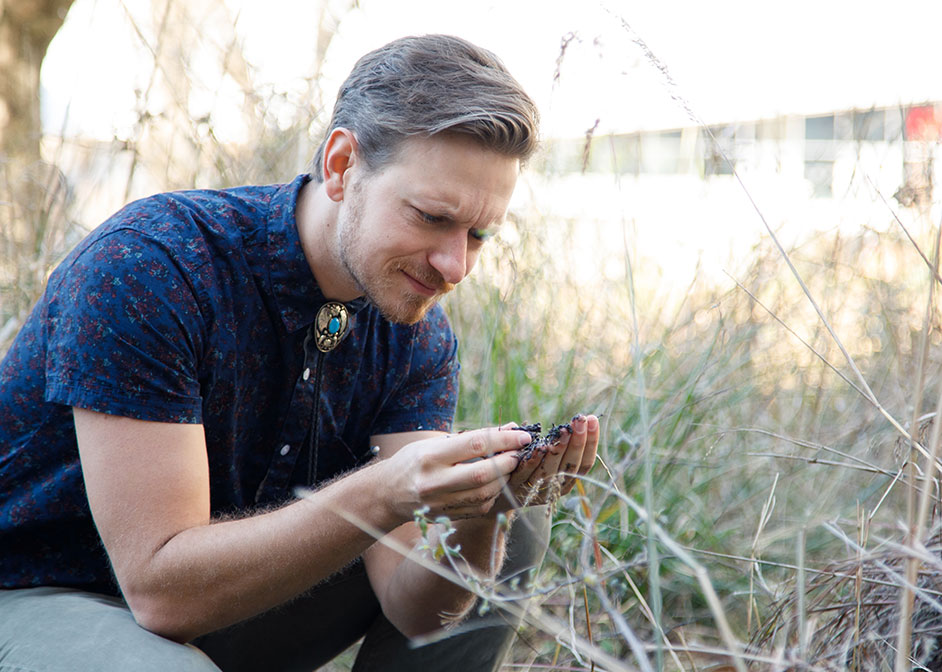Out on the Texas Plains: Understanding Grassland Ecology
Texas Ecolab Grant Funds Ph.D. Student’s Research
The Texas grasslands stretch across the state, from Houston all the way out west toward Big Bend National Park, then north toward the panhandle. For all the unending vistas, the Texas Plains represent a complex ecosystem that has adapted to survive a wide range of weather conditions and precipitation levels.

Texas Plains and Microbial Communities
Noah Luecke, a University of Houston Ph.D. student in biology, wants to understand how the microbial communities contained in grassland soils affect a plant’s ability to thrive under different rainfall conditions.
“Texas is unique in that you have a vast distance in which a unique community of plants can grow under very different conditions,” said Luecke, whose research is advised by Kerri Crawford, an assistant professor of biology and biochemistry in the UH College of Natural Sciences and Mathematics.
Luecke is the recipient of a one-year, $8,000 Texas Ecolab grant, which will fund a field study looking at various sites.
Microbial Communities Play Important Role in Ecosystems
Within an ecosystem, microbes play an important, yet poorly understood, role.
A good analogy would be the microbes found in our guts. Although a select few microbes lead to sickness, there are entire communities of microbes which play a beneficial role in digesting our food and producing necessary nutrients. An imbalance in these microbial communities is thought to be linked to certain diseases.
“Microorganisms impact plants similarly to the way they impact us,” Luecke said. “Understanding these dynamics is going to help us have a better understanding of how our ecosystems work.”
Studying the role of microbial communities has always been a tough task, simply because there are so many different types. Traditionally, studies have focused on one type of microbe, or one type of plant, which misses the effect of many different microbes working together.
Microbes Affect a Plant’s Ability to Retain Moisture
The grasslands of Texas, which at first glance look to be a constant ecosystem, thrive under very different conditions, which include differing rainfall totals. Across Texas, this can range from 19 inches to 59 inches of rainfall a year.
The microbial communities found in grassland soil are thought to play a role in helping plants adapt to these different pressures.
“Microbes affect a plant’s ability to get moisture,” Luecke said.
To understand how a microbial community can affect a plant’s water uptake, Luecke is sampling 10 different field locations across Texas, at three different time points throughout the year. Once he has these samples, he’ll use genetic and molecular techniques to assess how the microbial communities change in response to different conditions. This analysis will be followed up with controlled studies in a laboratory environment.
“Studying the soil is a beautiful way to appreciate how interconnected we are with the world,” Luecke said. “If I am going to end up as dirt in the ground, I’d like to understand the dirt a little bit more.”
- Rachel Fairbank, College of Natural Sciences and Mathematics
May 6, 2019